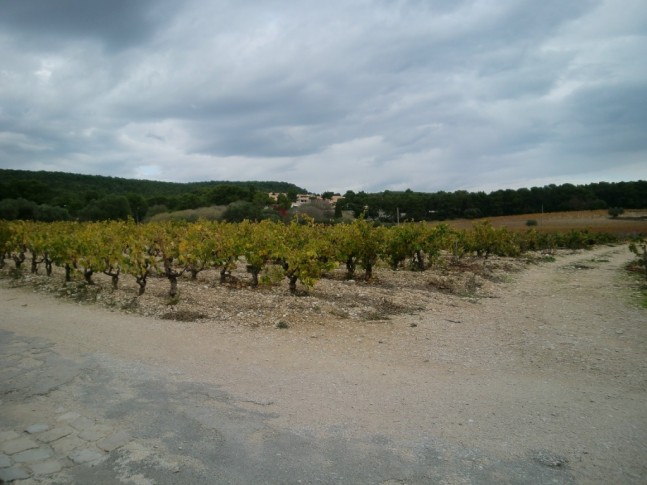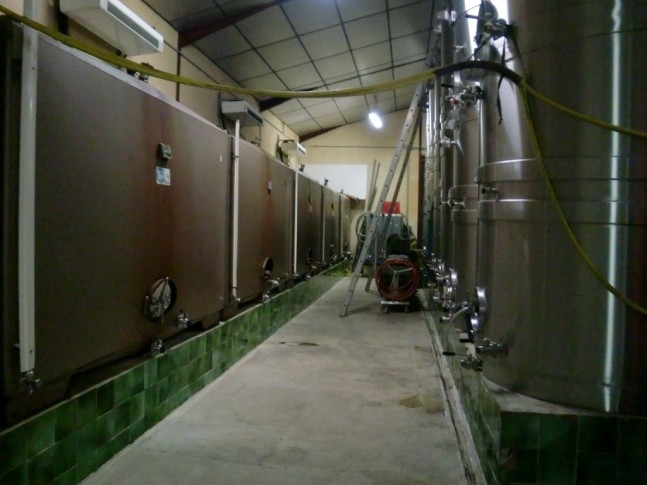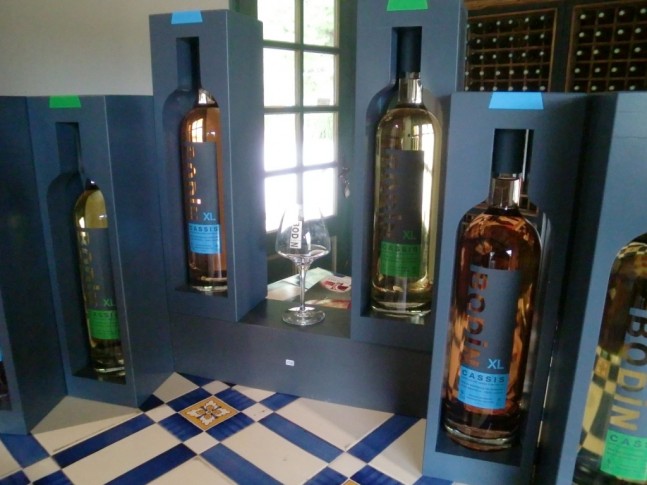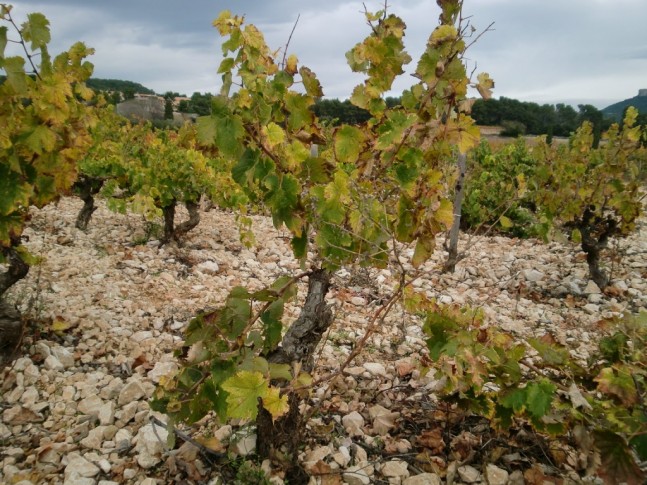Part 3 of the Provence wine series
The history of Cassis goes back to 2600 years when the first vines were being planted by the Romans. Cassis is one of those AOCs in France that needs more promotion overseas from wine lovers.
Because of the huge domestic demand for cassis wines, export is limited. The wines are best served chilled on a hot day and it is usually a wine that complements the local seafood cuisines of Marseille. Most of the production are whites and rosé with a percentage of 4% going to reds.
Cassis is the third oldest AOC created in 1936 after Châteaunuef-du-Pape and Quincy. Contrary to the literature, Cassis wines can be high in acidity but also aromatic. This aromatic quality has partly to do with the Marsanne grape which not only imparts depth of colour but aromas of nuts, spice and honeysuckle at its best.
The principal grapes are both Clairette (fruit, floral, aromatics) and Marsanne (roundness & butteriness). They must be both included in the blend at a minimum total of 60% in which the Marsanne has to be between 30 to 80% of the blend.
The secondary grapes are Pascal, Sauvignon Blanc (acid & citrus notes), Terret Blanc and Ugni Blanc (freshness, acid & minerality). The reds and rosé wines from Grenache, Cinsault, and Mouvèdre. Interestingly, Cassis allows a maximum blend of 20% white wine grapes into the rosés.
Cassis and Bandol are appellations that are not very far from each other – a mere 30 minutes by driving. Yet, the terrior is significantly different. The soils of Cassis are sandier with calcaire with some clay. Its terraced vineyards are planted in a valley where the sun is trapped by a horse-shoe shape formation of mountains. This is almost similar to Muscat Beaumes de Venise AOC in terms of the mountain formation.
Clos Sainte Magdeleine
For some of you who could be aware, Clos St Magdeleine is quite famous in the USA as it carried by Kermit Lynch Wine Merchants. I have had the good chance to meet Franςoise Sack who runs this estate and his son, Jonathan, helps him to make the wines.
The estate has been organic since 1975 and they have always made three wines. Historically, the estate has been around since 1900 and Franςoise showed me some documents which proves this. His vineyards experience the microclimates of the gentle sea breeze as a parcel is planted right beside the sea and another parcel is up on terraced slopes, next to and facing the ocean as well.
The estate produces 50000 bottles a year. There was not much to see in the winery as it was going through some major re-construction. Ferment temperatures for his rosé are 12-14 degrees. He sells out his rosés every year but I have been fortunate to be bestowed a half-bottle from him to sample and write about it.
2009 White wine, 13.5%, 40-50% Marsanne, 25% Clairette, 21% Ugni Blanc €14
Pale white. Light nose with citrus and straw. The flavours of raspberry and a light honey flavor. A simple and enjoyable wine in the summer.
*2010 Rosé, 12.5%, 45% Cinsault, 45% Grenache, 10% Mouvedre, €14
Pale orange rose colour. medium Intensity nose, blood oranges, light peach, after 6 hours, it is more smells more like grapefruit. On the palate, high acid, fresh, very light tannins, light grapefruit, peaches, good sustained mid-palate and phenolic structure through the length. The palate is refreshing. Long length with a great burst of flavours and then delicate backpalate of peaches and blood orange in the back. A very fresh style, even slightly minty. Different from the normal sweet fruit upfront rosé where this emphasise more on acid and slight phenolics to give flavour. It is like having a bit of the pips when chewing on an orange. Best served at 10 degrees.
After a day, it is still grape fruit in flavour but has a fresh, mineral flavour to it; the length has been shortened and flavour like a lingering light candy flake remains.

Château de Fontblanche in cassis notice how much limestone there is the ground is covered in white
Château de Fontblanche
Nicolas Bontoux-Bodinand his wife, Julia runs the show of this estate. The Roi René introduced Muscat to the region but when phylloxera struck the region, the vines were pulled out. Nicolas’s great grandfather, Emile Bodin is a legend of the region and was highly respected. He went ahead to re-plant the vines in Cassis by obtaining rootstocks from Texas.
From then on, the wines of the region turned from sweet to dry. Emile was among the first to make wines in Cassis and to bottle wines in Provence, followed by Château Simone. In the late 20s, a quarry project threatened to destroy the vineyards by having a factory built on the land. Emile started a petition and a newspaper to fight against the project and succeeded in protecting the land.
According to the AOC law, the grapes of the vines are allowed to be used only when they more than four years old. The goblet vine-training system is used but due to the strong winds from the East, the training is being changed to a wired cordon. Apart from wind protection, this allows faster picking of grapes. Copper sulphate is used but no weed killers are used and tilling is done by March.
The plantings at Château de Fontblanche are North-South row orientation which maximizes sunlight, causing no shadow on each row. Normally, the tradition is to leave 4 buds per vine and yields are limited to 40hl/ha. The vine density is 4500 vines/ha.
Nicolas laments that the Appellation rules do not permit irrigation unless a special permit is obtained for vines less than 4 years old. He believes that irrigation can help the vines grow in a dry year and can improve the quality of the vine. There is not a lot of rain in the region but when it rains, it is heavy. The rainfall is 600mm/year.

The vinification of Fontblanche where whites are the main production in the region
The grapes are de-stemmed and cooled quickly through a heat exchanger to 10 degrees less than the picking temperatures. The pressing and free-run juices are separated into different tanks, allowing them to cold settle for 24 hours. Fermentation of the whites is natural at temperatures of 17 to 19 degree Celsius.
Nicolas feels that any colder than this for his grapes will arrest the fermentation and any warmer would cause oxidation. The ferments can last for 10 days. After that, the wines are filtered with earth filters and blended. There is no co-fermentation of grapes or MLF. The sulphur levels are less than 5 g/hl and it is added at the beginning to prevent oxidation but not when the wine is pressed.
For the reds, they are fermented in stainless steel with epoxy inside the tanks. The pumping over is 2 times a day. There is no cold maceration for the reds. They do not go through any oak ageing and are meant to be drunk young. Fermentation temperatures are 24 to 25 degree Celsius over 15 days. The pressings are under 2 bars with the first pressing being 1.3 bars. Racking is done after ferment depending on the analysis of the wines.
The rosés are made with the pressing method and not the saignée as it is clearer, more delicate and finer. The rosés in Cassis are usually consumed young in summer. To Nicolas, the acidity is important for the freshness and saignée extracts tannins and heavy materials. The rosés are bottled first, then the whites and finally the reds over the period from May to June.
The production is 200 000 bottles per year.

A tasting hosted by Bodin of Fontblanche
Cuvée ‘Notre Dame des Lumières’ 2010, 13%, less than 40% Clairette, 10% Ugni Blanc, 10% Sauvignon Blanc, 30% Marsanne, €15.55, €13 ex-cellar.
Pale yellow. A light intensity of butter, quite filling on the nose, apples and mangoes. On the palate, has that ugni flavor, ripe mangoes, light apples, high acid, Medium(+) length. Full of flavor and a forceful lemon finish.
Synthetic cork. Best served at 10 degrees. This usually has a lifespan of 3 years.
*Blanc “Pur Jus de Gouttes” 2010, 13%, 33%Ugni Blanc, 33% Marsanne, 33% Clairette, 1% Sauvignon Blanc, €12.65, €9.20 ex-cellar
Pale green. Med(+) intensity, lots of ripe fruit, mangoes, pineapples, lots of strength, some floral hints and lemon rind. The palate has flavours of flowers, lots of strength, very fresh, high acid with a long length. Lemon and citrus flavours shine through with wonderful freshness. Lots of roundness.
Free-run juice used only. Goes well with sweet cheeses and goat’s cheese
Blanc Tradition Emile Bodin 2010, 13%, 33%Ugni Blanc, 33% Marsanne, 33% Clairette €11.50, €8.30 ex-cellar
Pale green. Lots of rind fruit, lemon rind and heavy, med(+) intensity, lemon and mineral. The palate has high acid, citrus fruit, very nice body, structured, long length. A fresh crisp style with flavours of straw, mineral, lime. Very sturdy.
Pressing juice used. This is a good example of what the French call pierre à fusil meaning gunflint.
Rosé 2010, 13% €12.65, €9.20 ex-cellar
Pale pink. Beautiful peach, med(+) intensity, mineral notes, not lifted like most Grenache style wines, a sort of hidden earth to it, custard fruit. On the palate, beautiful freshness, lots of flavours, slightly frizzy, high acid, long length and so full of smoothness and fatness.
Best drank within 3 years
Rouge 2009, 40% Mouvédre, 60% Grenache, €12.65
Deep purple colour. Earthy, red currants, dusty, bramble and peppery, med(+) intensity. The palate is fresh, med(+) acid, alcohol and tannins. Dusty tannins, bramble and minty. Long length. The finish is forceful and fruity with some blackpepper. A much lighter style than Bandol. Some slight charcoal flavours and smokiness.
Good as an Aperitif or with chicken but not for gamey dishes.
|
|
Tweet |







3 Comments to Sommelier Shalom Chin Provence Blog Part 3 – A Case for Cassis | Comments Feed
That’s going to make things a lot esaier from here on out.
What liberating knowledge. Give me lbietry or give me death.
Your actirle very interesting, I have introduced a lot of friends look at this actirle, the content of the actirles there will be a lot of attractive people to appreciate, I have to thank you such an actirle.
The comments are closed.